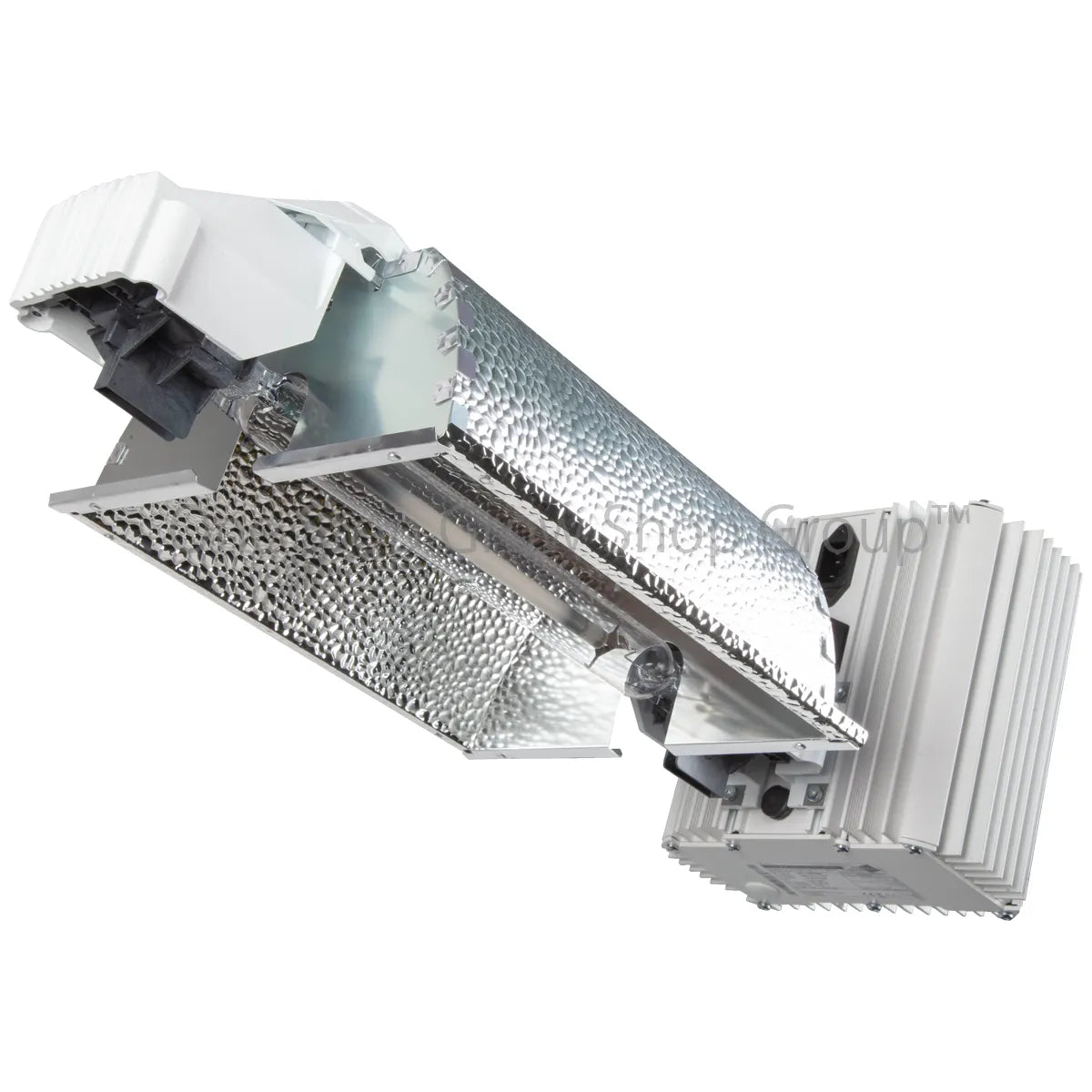
Probably the most important and necessary part of an indoor grow set up is the Grow Light set-up. Unless you can grow in a greenhouse or a conservatory, then a grow light is pretty much an essential piece of equipment for the indoor grower. In fact, even in a greenhouse or conservatory, from mid-autumn through to early Spring, there will likely not be enough sunlight to grow plants effectively. It follows then that unless supplementary grow-lighting is added, the amount of time in the year that you can grow effectively in this situation is drastically reduced.
The Type of Grow Light
The type of light that is best for you depends a lot on the type of plant that you want to grow. The main criteria that we need to consider are average plant height and whether the crop is predominantly leafy, or if the crop is mainly fruits or flowers.
Average plant height affects how intense your grow light will need to be. Tall plants (about 12 inches or greater) will need the superior penetrative power of a high intensity discharge lamp in order for the light to be still effective down towards the bottom of the plant. Shorter plants may be able to get away with the lesser penetrative power of a fluorescent type grow light.
There are really just 2 types of chlorophyll that plants have in their leaves, and they convert light to sugars from 2 different wavelengths of light. It is definitely true that the healthiest looking plants receive both types of light and therefore activate both types of chlorophyll. But if you have to choose just one colour spectrum for your grow-light, then here's how to make the decision of which one to go for: The leaves of plants grow best under blue-white light, which is converted into sugars by chlorophyll type A. Fruits and flowers on the other hand, develop better and more prolifically under a more yellow-orange type of light that is converted into sugars by chlorophyll type B.
So, short leafy plants like lettuces and most herbs can be grown very well under fluorescent with a mainly cool-white (slightly blue) type tube. They can also be grown under a cool-white type HID grow light ie Metal Halide (MH).
On the other hand, taller plants that produce flowers or fruit e.g. tomatoes, will certainly veg nicely under blue-white light but when the plant starts to produce fruit, they need to be ideally under a yellow-orange HID light ie a high pressure sodium type HID (more commonly known as an HPS) so that the plant has the required energy to produce large, succulent fruits.

Fluorescent grow lights are fairly straightforward. While CFL-type fluorescent grow lights are economical and ok, it has been proven that the best type of fluorescent grow light, without a shadow of a doubt, are T5 fixtures and tubes. Among the best of these are the Maxibright T5 LightWave units. The lamps that come in the Maxibright units are cool-white, but replacement tubes are available in both cool-white and warm-white. All you need to do is choose the fitting that best covers your growing area.

HID grow lights (ie HPS and MH types) require 3 distinct parts - ie a ballast, a lamp and a reflector. One Stop Grow Shop specialises in a great range and choice of kits consisting of the 3 components put all together. Alternatively, we sell all 3 parts separately so you can choose and customise your own system.
Ballasts tend to fall in to 1 of 2 types: electronic types or traditional magnetic core & coil types. Traditional magnetic core & coil are based on a transformer and starter. They do waste some energy as heat, making them relatively less efficient. They are also heavy, and cannot accommodate features such as switchable power outputs to drive different wattage-rated lamps. Electronic-type ballasts use more modern technology to drive HID lamps. They run cooler, and are therefore more efficient. They are lighter in weight and often come with switchable power outputs so that more than 1 wattage of lamp can be used with them. Some even boast a "super-lumen" switch or similar, which kicks out an extra 10% power to make the most of ageing lamps. The ballast MUST be matched to the lamp you will be using (or, in the case of electronic ballasts, it needs to have a matching switch setting).
Reflectors, like ballasts, in some respects, should also be matched to the wattage of lamp that you are using. The first reason for this is that some lamp-holders (which are included with the reflector) can only handle certain wattages. Putting a 1000W lamp in a holder that's only designed to handle 600W and there's going to be a risk of damage and possibly fire. The second reason is that there is no point using a low-power lamp in a huge reflector. For example, matching a 250W lamp to a huge Sol-Digital XXXL would make no sense. The Sol-Digital XXXL is designed to deal with the breadth of light thrown from a high wattage lamp such as a 1000 watter. The light from a smaller lamp in such a reflector would simply get lost. Similarly, a smaller reflector designed for the throw from smaller lamps would not effectively create an even footprint with a 1000W lamp.
So there you go! Simply decide on the colour and type of lamp that is appropriate for the plant that you want to grow. Then choose a wattage of light (or wattages for an array of lights) that's appropriate for your grow space and energy budget. Then, if you have decided to go with an HID lamp, choose a reflector and ballast to suit the wattage you have decided to go with. Simple!

